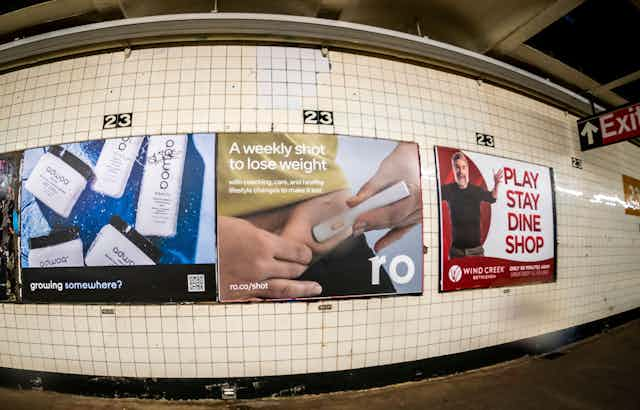A few years ago, celebrity weight-control practices were out of most people’s reach. Live-in chefs and personal trainers, not to mention elaborate surgical procedures like the Brazilian butt lift, were not real options for most. But with the advent of drugs such as semaglutide, it seems that anyone can go online and buy the same miracle drug that billionaires like Elon Musk use to keep in shape.
However, are online buyers really getting the same product? If not, what are they getting? And is it safe?
Semaglutide is one of a class of drugs known as GLP-1 receptor agonists. The first GLP-1 drug was made by copying a chemical found in the venom of the Gila monster. These medicines work by helping the body to produce the right amount of insulin at the right time, which helps to regulate blood sugar. This means they are highly effective for people with type 2 diabetes.
Semaglutide, marketed under the brand name Ozempic, has been used as a diabetes drug for over five years now. But Ozempic and other GLP-1 drugs were also found to lead to significant weight loss – and not just in people with diabetes.
Pharmaceutical companies such as Novo Nordisk and Eli Lilly have now developed GLP-1 drugs specifically for weight loss. Novo Nordisk’s semaglutide (under the brand name Wegovy) is now approved as a treatment for obesity and weight-related health conditions in the UK, the EU and elsewhere.
This does not mean Ozempic and Wegovy are easy to get. In fact, there is a global shortage affecting even those with prescriptions. Meanwhile, TikTok and Instagram are flooded with people sharing their semaglutide weight-loss journeys. Some social media posters explain the disparity by saying that they are taking “generic” semaglutide. But semaglutide (like similar drugs such as liraglutide and tirzepatide) is still under patent, meaning it is illegal to make a generic form.
What are they buying?
Many drugs, including familiar ones like paracetamol, are not patented, meaning any company with the right licence and an up-to-code production facility can make and market its own generic version. But this is not the case with semaglutide or any other GLP-1 drug. So what is it that online buyers are taking?
One possible answer can be gleaned from a recent warning by the US Food and Drug Administration about the dangers of buying GLP-1 drugs without a prescription. The warning refers to “salt forms” including semaglutide sodium and semaglutide acetate. Drug makers often develop a salt form of a drug if the pure chemical form cannot be absorbed in the body.
Novo Nordisk itself markets semaglutide sodium as a diabetes drug called Rybelsus. While many salt forms are perfectly safe, others are only approved for use in research, and may not even be deemed safe for use in humans at all. If buyers are getting unlicensed salt forms of semaglutide, they cannot be sure the medicine they’re taking is safe or effective.
Another possibility is that buyers are getting “compounded” versions of semaglutide. Often, the chemicals used to manufacture drugs are made by third parties. Under some circumstances – for example, when there is a recognised shortage of a drug – compounding pharmacies or labs are allowed to buy the raw materials directly from the manufacturers and make their own version of that drug.

Novo Nordisk has issued cease and desist letters to companies it accuses of violating its patent by compounding semaglutide. But compounding pharmacies counter that Novo Nordisk’s patents apply to finished medicines like Ozempic, not to the chemical that makes up semaglutide. They argue that the shortage of Ozempic and Wegovy gives them the right to make and market compounded equivalents.
Even if it is legal to produce compounded versions of semaglutide, these versions are still prescription drugs. This means that online buyers without prescriptions face two somewhat alarming possibilities: either they’re not getting semaglutide legally, or they’re not getting semaglutide at all.
In the former case, people have none of the protections they would have when taking a properly prescribed drug. In the latter case, they may be wasting money on something that is at best ineffective, and at worst dangerous.

